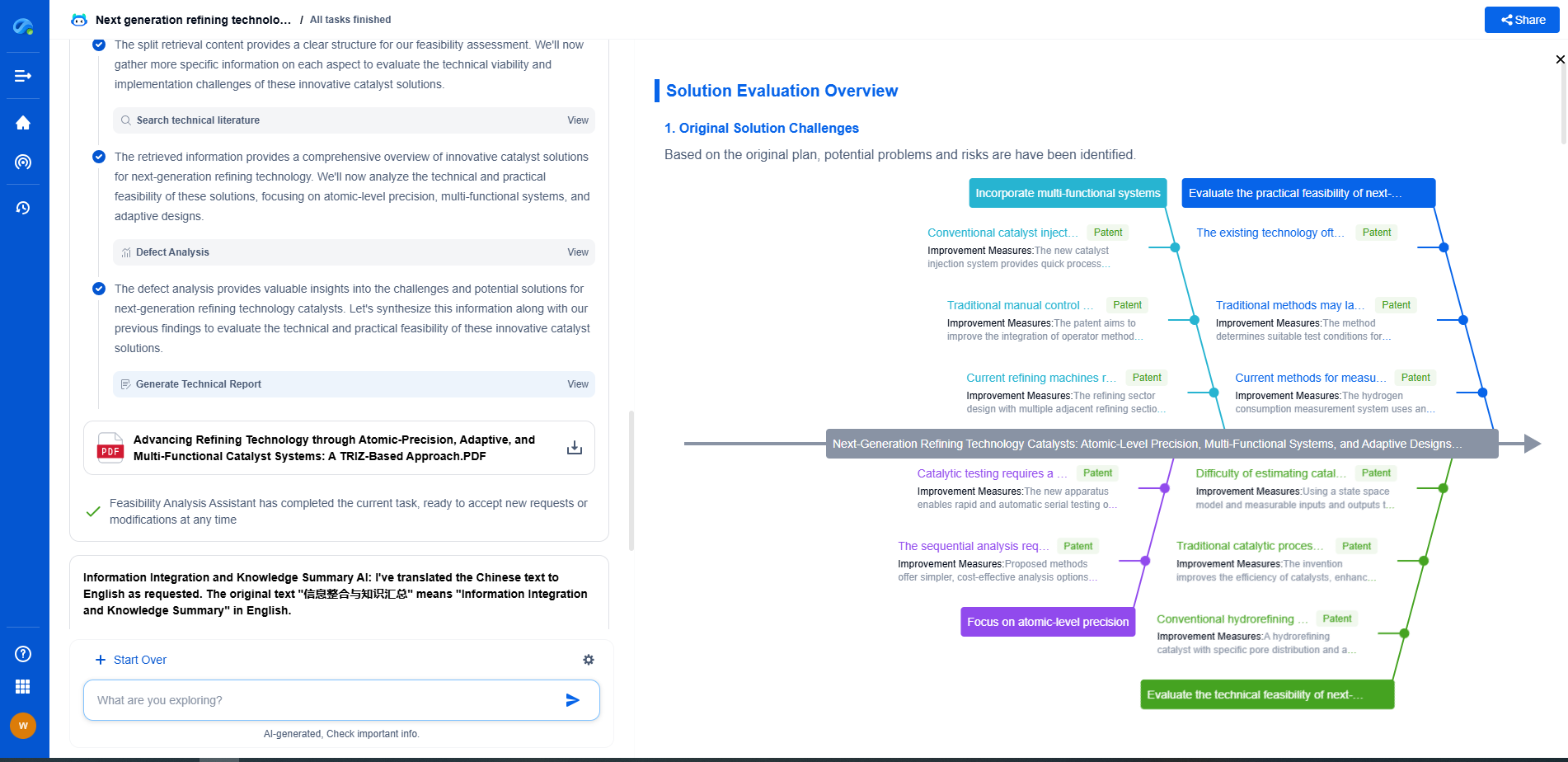What Is Voltage Compensation in Power Distribution?
JUN 26, 2025 |
Voltage compensation is a critical concept in power distribution that ensures the stability and efficiency of electrical systems. As electrical energy travels from power plants to end-users, it experiences voltage drops due to resistance and reactance in power lines. Voltage compensation aims to mitigate these drops and maintain the voltage within prescribed limits, ensuring reliable operation of electrical devices and optimal power quality.
Why Voltage Compensation is Necessary
The need for voltage compensation arises from the natural losses that occur as electricity travels over long distances. These losses can lead to voltage drops, causing the voltage at the end-user's location to fall below acceptable levels. When voltage levels are too low, electrical equipment may not function properly, leading to inefficiencies, increased operational costs, and even potential damage to sensitive devices.
Additionally, voltage fluctuations can result in poor power quality, which can disrupt industrial operations and reduce the lifespan of electrical appliances. To combat these issues, voltage compensation strategies are employed to adjust the voltage levels and ensure that they remain within designated thresholds.
Methods of Voltage Compensation
1. **Capacitor Banks**
Capacitor banks are commonly used for voltage compensation in power distribution systems. They work by providing reactive power support, which helps to reduce voltage drops across the network. By locally supplying reactive power, capacitor banks can improve voltage levels and enhance the power factor, leading to more efficient energy consumption.
2. **Voltage Regulators**
Voltage regulators are devices that automatically maintain a constant voltage level in electrical circuits. They can be strategically placed along distribution lines to counteract voltage drops. These regulators adjust the voltage by tapping into transformers or using electronic control methods, ensuring that the voltage remains stable despite varying load conditions.
3. **Static Var Compensators (SVCs)**
Static Var Compensators are advanced systems used to stabilize voltage levels on power grids. SVCs dynamically adjust the reactive power supply by using power electronics to control the flow of electricity. They are particularly useful in large and complex power networks where maintaining voltage stability is challenging.
4. **Distributed Generation**
Integrating distributed generation sources, such as solar panels and wind turbines, into the power grid can also aid in voltage compensation. These localized energy sources can provide supplemental power, reducing the dependency on long-distance transmission and minimizing voltage drops.
Challenges in Implementing Voltage Compensation
Despite its benefits, implementing voltage compensation is not without challenges. The integration of compensation devices into the existing grid can be complex and may require significant investment. Additionally, the dynamic nature of electrical loads and generation sources necessitates continuous monitoring and adjustment of voltage compensation measures to ensure effective operations.
Moreover, advancements in technology, such as smart grids and automated control systems, are vital for the efficient application of voltage compensation techniques. These technologies allow for real-time data analysis and response, enhancing the capability of power distribution systems to manage voltage levels effectively.
Benefits of Voltage Compensation
The primary benefit of voltage compensation is the enhancement of power quality and system reliability. By maintaining stable voltage levels, voltage compensation helps ensure that electrical appliances operate efficiently and last longer. This stability also reduces the risk of power outages and improves the overall performance of the power distribution network.
Furthermore, voltage compensation contributes to energy efficiency by optimizing the use of electrical resources and minimizing losses. This efficiency translates into cost savings for both utility providers and consumers, as well as reduced environmental impact through lower energy wastage.
Conclusion
Voltage compensation is an essential component of modern power distribution systems, ensuring that electricity is delivered reliably and efficiently. With the challenges posed by increasing electrical demand and the integration of renewable energy sources, effective voltage compensation strategies are more critical than ever. By employing techniques such as capacitor banks, voltage regulators, and advanced technologies like SVCs and smart grids, power providers can maintain high-quality electrical service and meet the needs of a rapidly evolving energy landscape.
Stay Ahead in Power Systems Innovation
From intelligent microgrids and energy storage integration to dynamic load balancing and DC-DC converter optimization, the power supply systems domain is rapidly evolving to meet the demands of electrification, decarbonization, and energy resilience.
In such a high-stakes environment, how can your R&D and patent strategy keep up?
Patsnap Eureka, our intelligent AI assistant built for R&D professionals in high-tech sectors, empowers you with real-time expert-level analysis, technology roadmap exploration, and strategic mapping of core patents—all within a seamless, user-friendly interface.
👉 Experience how Patsnap Eureka can supercharge your workflow in power systems R&D and IP analysis. Request a live demo or start your trial today.
- R&D
- Intellectual Property
- Life Sciences
- Materials
- Tech Scout
- Unparalleled Data Quality
- Higher Quality Content
- 60% Fewer Hallucinations
Browse by: Latest US Patents, China's latest patents, Technical Efficacy Thesaurus, Application Domain, Technology Topic, Popular Technical Reports.
© 2025 PatSnap. All rights reserved.Legal|Privacy policy|Modern Slavery Act Transparency Statement|Sitemap|About US| Contact US: help@patsnap.com

